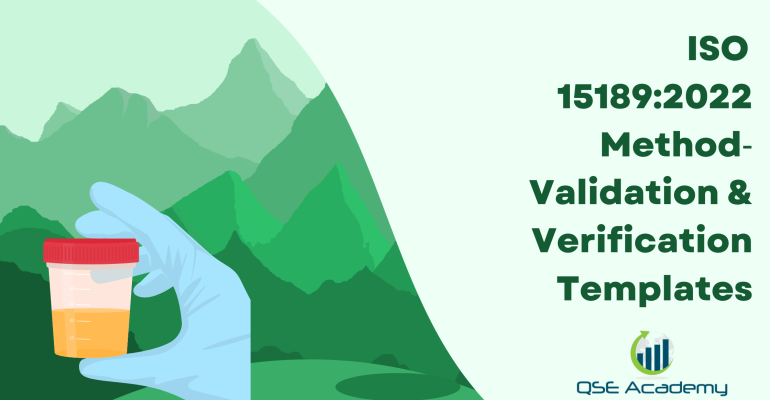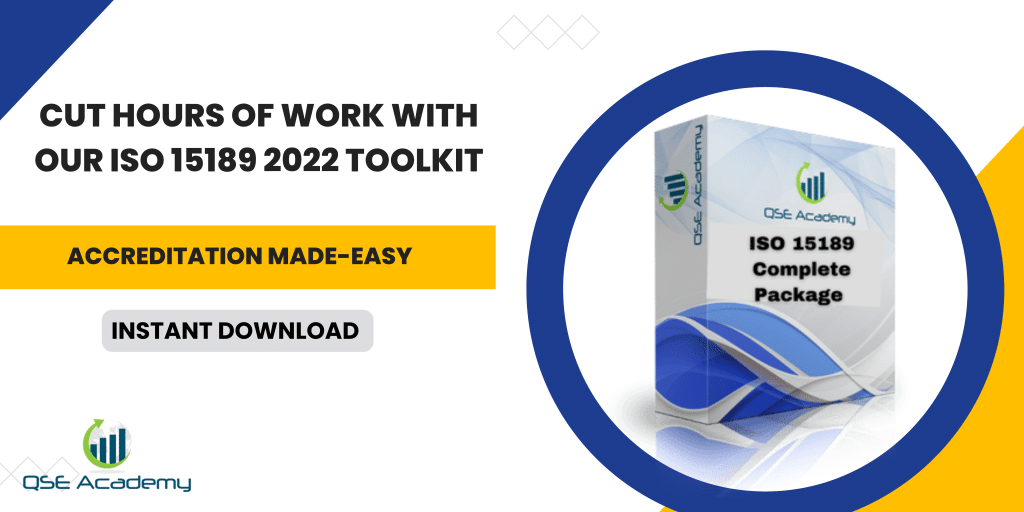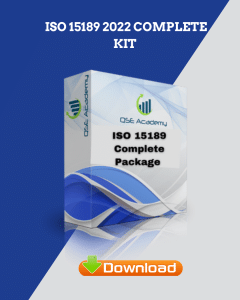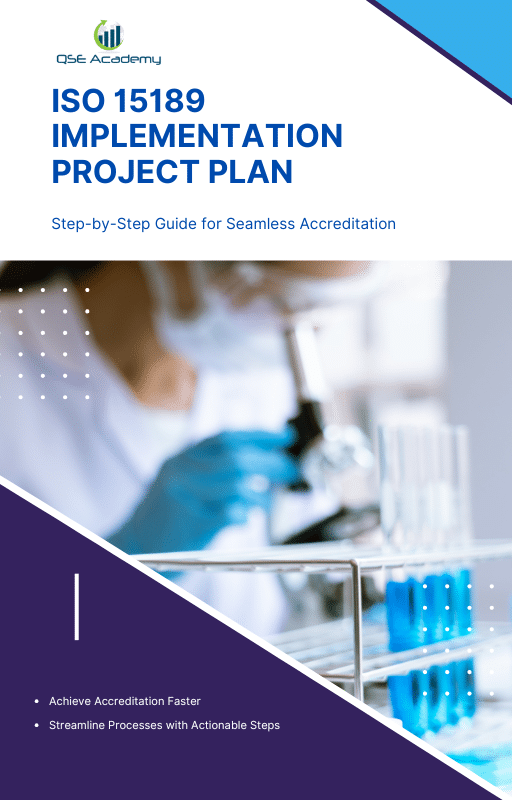ISO 15189:2022 Method‑Validation & Verification Templates
Last Updated on October 22, 2025 by Hafsa J.
Why Method Validation and Verification Matter in ISO 15189:2022
Every time I help a lab prepare for ISO 15189 accreditation, one issue almost always shows up — unclear or incomplete method validation and verification records.
It’s not that labs aren’t doing the science right. They’re running solid tests and getting accurate results. The problem is that the documentation doesn’t prove it.
Here’s what I’ve noticed: most teams either copy the manufacturer’s performance data or confuse validation with verification. It’s an easy mistake to make — both aim to confirm reliability, but they’re not the same thing. And during an audit, that difference can cost you.
In this guide, I’ll walk you through:
-
The exact requirements ISO 15189:2022 expects for validation and verification.
-
The difference between the two and when each applies.
-
Simple, ready-to-use templates that help you document everything correctly and consistently.
If you’ve ever been unsure how much testing or documentation is enough, this article will make the process clear, practical, and audit-proof.
Understanding Validation vs Verification in ISO 15189:2022
Let’s start by clearing up the most common confusion I see in labs — the difference between validation and verification.
They sound similar, but under ISO 15189:2022, they serve two very different purposes.
Validation
Validation means you’re proving a new or modified method performs as intended.
It’s your way of saying, “We developed or adapted this procedure, and we’ve demonstrated that it works reliably in our lab.”
You’ll need validation when you:
-
Introduce a new method developed in-house.
-
Modify a published or manufacturer method.
-
Change critical parameters like instruments, reagents, or sample matrices.
Example:
A molecular lab designs its own PCR protocol for a new viral strain. That method must go through full validation — including accuracy, precision, detection limits, and uncertainty.
Verification
Verification, on the other hand, applies when you’re using an established or standardized method.
You’re not proving the method works globally — you’re confirming it works in your specific lab conditions with your equipment, environment, and staff.
You’ll need verification when you:
-
Adopt a method already validated by the manufacturer or a standard body.
-
Install a new instrument using existing methods.
-
Implement an assay your lab hasn’t performed before but is already standardized.
Example:
A clinical chemistry lab starts using an ISO or CLSI method for glucose testing. They don’t need to validate the method itself — they just need to verify that it performs correctly with their analyzer and reagents.
Pro Tip:
When in doubt, ask: “Is this method new to science, or just new to my lab?”
If it’s new to science, validate. If it’s new to your lab, verify.
Common Pitfall:
Relying solely on the manufacturer’s data. ISO 15189 expects you to confirm that performance claims hold true under your conditions. Skipping this step is one of the top causes of nonconformities.
ISO 15189:2022 Requirements for Validation and Verification
Now that you know the difference between validation and verification, let’s dig into what ISO 15189:2022 actually requires. The latest version tightened expectations around evidence, traceability, and fitness for purpose. It’s not just about proving a method “works” — it’s about proving it’s reliable under your specific conditions.
Here’s where you’ll find the key requirements in the standard:
| Clause | What It Covers | Why It Matters |
|---|---|---|
| 7.3 – Validation and Verification of Examination Procedures | You must confirm that methods meet intended performance before use. | Ensures test results are accurate and defensible. |
| 7.4.1 – Selection and Evaluation of Examination Procedures | You must choose methods suitable for their clinical or analytical purpose. | Prevents inappropriate or unverified tests from being used. |
| 7.5.1 – Performance Verification | You must verify performance claims when using established or standardized methods. | Confirms that manufacturer or reference data hold true in your lab. |
These clauses all point to the same goal — confidence in your results. Auditors want to see that you didn’t just trust what the supplier told you, but actually confirmed it.
Pro Tip:
Create a summary page for each method that lists the validation or verification performed, key parameters tested, and the approval date. It’s a quick win during audits and makes your system look controlled and organized.
Common Pitfall:
Labs sometimes think verification isn’t required for “off-the-shelf” tests. That’s incorrect. Even if a kit is CE-marked or FDA-approved, ISO 15189 still expects local verification before routine use.
In my experience:
One immunology lab failed its initial audit because it used a new analyzer without verifying the manufacturer’s performance claims. They corrected it with a simple two-day verification protocol — and passed the follow-up with zero findings.
Your takeaway: ISO 15189 doesn’t just want technical data. It wants traceable proof that your lab confirmed every method’s reliability before using it on patient samples.
Step-by-Step Process for Method Validation
Method validation can feel intimidating — but when broken down properly, it’s a structured process that simply proves your test method works as intended. ISO 15189:2022 doesn’t dictate how you must validate; it tells you what must be demonstrated. That gives you flexibility — as long as you can back up your data with evidence.
Here’s the step-by-step approach I guide my clients through when developing a new or modified method:
Step 1: Define the Purpose and Scope
Start by clearly stating what you’re validating and why.
Are you developing an in-house method? Modifying a published procedure? Changing a reagent or matrix?
Write this down. The purpose defines the extent of validation required.
Pro Tip:
Be specific — “Validation of in-house ELISA for detection of Salmonella in food samples” is far better than “ELISA validation.”
Step 2: Select the Performance Parameters
Identify which characteristics you need to assess.
Typical parameters include:
-
Accuracy
-
Precision (repeatability and reproducibility)
-
Linearity
-
Limit of detection and quantification
-
Measurement uncertainty
-
Robustness
Your chosen parameters should make sense for your method and intended use.
Step 3: Develop a Validation Plan
Before testing, prepare a written plan. It should include:
-
Purpose and scope
-
Parameters to be evaluated
-
Sample size or replicates
-
Acceptance criteria
-
Assigned responsibilities
-
Approval signatures
A clear plan shows assessors you didn’t “wing it” — you followed a controlled process.
Step 4: Conduct Validation Experiments
Run your tests according to the plan. Record all raw data and environmental conditions.
Use appropriate statistical tools to analyze results (e.g., standard deviation, correlation coefficients, confidence intervals).
Pro Tip:
Create a Validation Data Sheet for each experiment. It keeps all numbers, charts, and notes in one place for easy review.
Step 5: Review and Document Results
Once data collection is complete, summarize outcomes in a concise Validation Report.
Include:
-
Method name and ID
-
Date performed
-
Results for each parameter
-
Comparison with acceptance criteria
-
Overall conclusion (approved, conditionally approved, or rejected)
Have it reviewed and signed by authorized personnel — typically the Quality Manager or Technical Director.
Step 6: Establish Ongoing Monitoring
Validation isn’t one-and-done. Once approved, monitor performance regularly through internal QC, proficiency testing, and review of control charts.
In my experience:
Labs that connect their validation data with daily QC trends rarely face audit surprises. It shows that your method continues to perform as intended long after validation day.
Summary Table: Key Validation Deliverables
| Document | Purpose | Reviewed By |
|---|---|---|
| Validation Plan | Defines scope and acceptance criteria | Technical Manager |
| Validation Data Sheets | Captures raw results and statistics | Analyst / Supervisor |
| Validation Report | Summarizes outcomes and decisions | Quality Manager |
| Approval Form | Formal authorization for routine use | Laboratory Director |
Step-by-Step Process for Method Verification
Verification is simpler than validation, but it’s equally important. It confirms that a standardized or manufacturer-validated method performs as expected in your laboratory’s specific conditions.
Think of it as a localized quality check. You’re not reinventing the science — you’re confirming that your staff, equipment, and environment can deliver the same level of performance the method promises.
Here’s a structured way to do it right under ISO 15189:2022.
Step 1: Identify What Needs Verification
You only verify established methods — those already validated by an external authority (for example, ISO, CLSI, or the manufacturer).
Examples include:
-
A CE-marked diagnostic kit used for the first time in your lab.
-
A published WHO or CLSI method newly adopted for a test.
-
A previously validated method implemented on new equipment.
Pro Tip:
Make a list of all examination methods and note whether each requires validation or verification. It’s a simple spreadsheet, but it saves hours of confusion later.
Step 2: Define Verification Parameters
Select which characteristics you’ll confirm locally. For most labs, these include:
-
Accuracy – Compare your results with a reference method or control sample.
-
Precision – Test repeatability over several runs.
-
Linearity / Range – Confirm the method works across the expected concentration range.
-
Detection Limit – Verify sensitivity using your own reagents and instruments.
You don’t need to redo every study from the manufacturer, only those that could be affected by your environment.
Step 3: Perform Verification Testing
Run side-by-side tests or replicate measurements using control materials.
Collect enough data to be statistically meaningful — usually at least five replicates per concentration level for quantitative methods.
Record:
-
Lot numbers of reagents and controls.
-
Environmental conditions.
-
Equipment and operator details.
Pro Tip:
Use a simple Verification Data Sheet with checkboxes for each parameter tested and space for raw results. Auditors like seeing consistent formats across methods.
Step 4: Compare Results with Acceptance Criteria
Assess your data against either:
-
The manufacturer’s claimed performance, or
-
Reference method results.
If everything falls within the defined range, document that the method is verified for use.
If not, investigate — it could be an environmental issue, operator error, or instrument calibration problem.
Step 5: Document and Approve the Verification Report
Prepare a short Verification Report summarizing what was tested, how it was tested, and whether the method met requirements.
Include:
-
Method title and source.
-
Verification parameters and outcomes.
-
Deviations, corrective actions, and final decision.
-
Approval signatures (usually Technical Manager and Quality Manager).
Common Mistake:
Labs often perform verification but fail to record it formally. Remember: if it isn’t documented, it didn’t happen — at least in the eyes of an auditor.
Step 6: Maintain Traceability and Review
Keep all verification data with your quality records. Review the method whenever there’s a change in reagent, software, or instrument model.
In my experience:
One biochemistry lab avoided a major nonconformity by doing this consistently — every time they changed a reagent lot, they verified precision with just five samples. The assessor called it “a textbook example of good verification practice.”
ISO 15189 Method-Validation and Verification Templates
Every lab knows validation and verification are required — but where most teams struggle is in documenting them clearly and consistently. Assessors don’t just want data; they want structure, traceability, and proof that the process was followed from start to finish. That’s where standardized templates become essential.
Well-designed templates make sure nothing gets missed. They also keep your QMS organized, reduce audit stress, and let any trained staff member pick up where another left off.
Here’s how to structure the key templates your lab should be using.
Validation Plan Template
Purpose: Defines the objective, scope, and acceptance criteria of your validation project before any testing begins.
Key Fields:
- Method name and unique ID
- Purpose (e.g., new in-house test, modified commercial kit)
- Performance characteristics to be evaluated
- Sample types and number of replicates
- Acceptance criteria for each parameter
- Assigned responsibilities
- Approval signatures
Pro Tip:
Keep the plan one page long. The goal is clarity, not complexity.
Validation Data Sheet
Purpose: Captures raw data, calculations, and summary results for each parameter tested.
Key Fields:
- Parameter (accuracy, precision, linearity, etc.)
- Instrument and reagent details
- Results table and statistical summary
- Graphs or control charts
- Comments or anomalies
Common Pitfall:
Labs often scatter results across multiple notebooks or files. Centralize everything on one sheet for easy review.
Verification Report Template
Purpose: Summarizes evidence confirming an existing method performs correctly under your lab’s conditions.
Key Fields:
- Method title and reference (e.g., ISO, CLSI, or manufacturer method)
- Verification parameters and data summary
- Comparison with manufacturer or reference performance claims
- Deviations and corrective actions
- Final decision (verified / conditional / not verified)
- Sign-off section for reviewers and approvers
Pro Tip:
Use checkboxes for each parameter (accuracy, precision, detection limit). This makes verification quick and standardized across all methods.
Approval Form Template
Purpose: Provides formal authorization to use the validated or verified method for routine testing.
Key Fields:
- Method ID and title
- Validation/verification reference number
- Final decision
- Reviewer and approver signatures
- Date of approval and next review date
In my experience:
Labs that include a short approval form at the end of every report rarely face documentation findings. It shows closure — that each method went through a controlled review before implementation.
Summary Table
| Template | Purpose | Key Benefit |
|---|---|---|
| Validation Plan | Define scope and criteria | Sets expectations upfront |
| Validation Data Sheet | Record test data | Keeps results organized |
| Verification Report | Summarize findings | Ensures traceability |
| Approval Form | Authorize use | Proves management control |
Documentation and Record-Keeping Tips
Here’s something most labs underestimate — you can do excellent validation and verification work, but if the documentation is disorganized, it’s as good as not done. ISO 15189:2022 expects traceability, not just data. Every record should tell the story of what was done, when, how, and by whom.
Keep a Clear Document Trail
For every method you validate or verify, make sure you can trace each stage:
-
Plan created and approved.
-
Testing completed with raw data recorded.
-
Results analyzed and summarized.
-
Review and authorization documented.
If any of these steps are missing or stored in different folders, you’re setting yourself up for findings during an audit.
Pro Tip:
Name your files consistently:[MethodID]_[Type]_[Date]_v1
For example: PCR_COVID19_ValidationReport_2025-03_v1
That single habit saves hours when auditors ask for evidence.
Centralize Data and Reports
Don’t scatter validation records across multiple drives or personal folders. Create a single, controlled repository — digital or physical — where all related forms, data sheets, and approvals are stored together.
In my experience:
One mid-size clinical lab used an “All Validations” folder with sub-folders by instrument type (Hematology, Chemistry, Microbiology). Each had its own tracking sheet showing validation status and next review date. Their audit turnaround time dropped by half.
Ensure Version Control
Every validation or verification record must be traceable to the correct version of the method and instrument used.
If you update a test procedure or change equipment, cross-reference the new validation or verification data in your change-control log.
Common Pitfall:
Labs often forget to link updated SOPs to their previous validation files, leaving auditors unsure which version of the method was tested. Always include a short note like “Supersedes validation report VR-2024-03 due to reagent change.”
Digitize When Possible
Electronic systems or spreadsheets with locked fields help maintain consistency. They also make it easier to search by method ID, parameter, or approval date.
Pro Tip:
Use PDF versions for final approved reports with digital signatures — editable drafts should stay in a working folder until formally approved.
Retention and Review
Keep all validation and verification records for the full retention period required by your national authority or accreditation body. Schedule reviews annually or whenever the method, reagent, or equipment changes.
Remember — strong documentation isn’t about paperwork, it’s about evidence of control. If your files tell a complete and logical story, your audit will run smoothly.
Real-World Example – Validation Done Right
A few years ago, I worked with a molecular diagnostics lab that was rolling out a new PCR assay. They had solid technical skills, but their validation documentation was a mess—data stored in different folders, missing signatures, and no summary linking the results to acceptance criteria.
We started fresh. The lab created a Validation Plan outlining exactly what they would test: accuracy, precision, detection limit, and linearity. Each experiment had its own Data Sheet, and all results were compiled into one Validation Report. They ended with an Approval Form signed by both the Technical and Quality Managers.
During the audit, the assessor flipped through their binder and said, “This is the cleanest validation I’ve seen all quarter.”
The lab passed without a single nonconformity.
Here’s what made the difference:
-
Every document told a complete story—from planning to approval.
-
Results were summarized in plain language with clear acceptance criteria.
-
All files were named consistently and easy to trace.
Lesson:
Validation isn’t just about running the numbers. It’s about showing, step by step, that your method produces reliable results every time. A structured approach and well-designed templates make that story simple to tell—and even easier to defend in an audit.
FAQs – Method Validation & Verification in ISO 15189:2022
Q1: Can we rely entirely on manufacturer validation data?
Not entirely. Manufacturer data demonstrates that the method works under their conditions. ISO 15189 requires your lab to confirm that the same performance can be achieved under your conditions — equipment, staff, environment, and sample types. That’s what verification is for.
In short: you can use manufacturer data as supporting evidence, but you still need to verify it locally.
Q2: When should we perform full validation instead of verification?
You must perform full validation when you:
- Develop an in-house method.
- Modify a published or manufacturer method.
- Change critical parameters such as instrument type, detection chemistry, or matrix.
If you’re using a recognized standard or unmodified commercial method, verification is enough.
Pro Tip:
If you’re unsure, ask whether your lab’s actions could alter the method’s performance characteristics. If yes, validate. If not, verify.
Q3: Do we need templates for every method and instrument?
Yes. Every examination procedure should have its own validation or verification record, even if two instruments use the same method. This shows traceability and consistency between equipment.
Example:
If two analyzers run the same glucose test, verify both separately — small performance variations can occur due to calibration or maintenance differences.
Q4: How long should we keep validation and verification records?
Keep them for at least the same period as your test records, or as specified by your accrediting body. Typically, that means at least five years or until the method is replaced or withdrawn. Always confirm with local requirements.
Simplify Validation with Ready-to-Use Templates
At its core, ISO 15189:2022 isn’t just about meeting documentation requirements — it’s about building confidence in your laboratory’s results. Method validation and verification are how you prove that confidence. When done properly, they show your lab is competent, consistent, and scientifically in control.
But here’s what I’ve seen over and over again: the science is solid, yet the paperwork tells a different story. Missing data sheets, scattered files, and unsigned reports can undo months of good work. That’s why structured templates make all the difference — they guide the process, keep evidence consistent, and make audits straightforward.
A good set of templates helps you:
-
Plan, execute, and review validations and verifications with clarity.
-
Maintain full traceability from raw data to approval.
-
Present your methods confidently to auditors and clients alike.
In my experience, once a lab implements standardized validation templates, the entire process becomes faster and less stressful. Staff know exactly what to document, managers know what to review, and auditors see a system that’s transparent and trustworthy.
If your lab is preparing for ISO 15189:2022 accreditation or upgrading your documentation, start with the right structure.
Next Step:
Download QSE Academy’s ISO 15189:2022 Method Validation & Verification Template Pack — complete with editable forms, acceptance criteria examples, and built-in review sections. It’s designed to save you time, strengthen your evidence, and keep your lab audit-ready year-round.
Whether it’s ISO 9001, ISO 22000, or the cosmetics-focused ISO 22716, I’ve spent my career I’m not here to call myself an expert—I prefer “enthusiast” because I truly love what I do. When I’m not writing about standards, you’ll probably find me playing Piano 🎹, connecting with people, or diving into my next big project💫. I’m an engineer specialized in the food and agricultural industry
make ISO standards less intimidating and more approachable for everyone.
turning complex jargon into clear, actionable steps that businesses can actually use.
There’s something incredibly rewarding about helping people navigate food safety and quality management systems
in a way that feels simple, practical, and even enjoyable.
I have a Master’s in QHSE management and over 12 years of experience as a Quality Manager
I’ve helped more than 15 companies implement ISO 9001, ISO 22000, ISO 22716, GMP, and other standards
My clients include food producers, cosmetics manufacturers, laboratories, and service companies
I believe quality systems should be simple, useful, and efficient.













